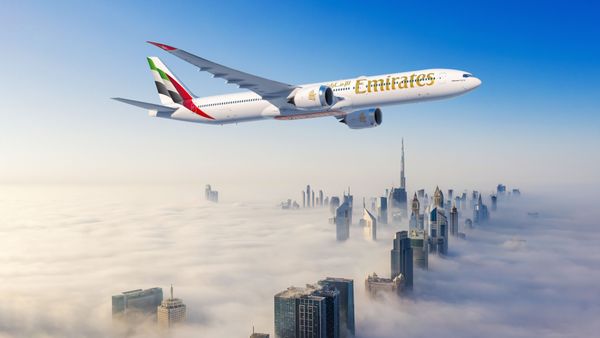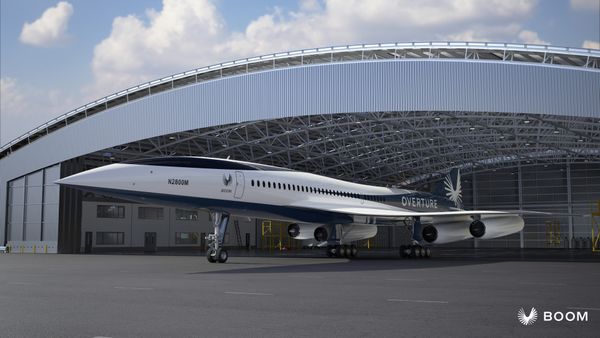In recent years, technological advancements in the aviation industry have set the stage for a revolutionary transformation: the development and implementation of self-flying planes. This groundbreaking frontier in aerospace engineering promises to redefine air travel, safety standards, and the very nature of piloting itself. As we embark on this exploration, we'll delve into the key aspects, challenges, and potential impacts of self-flying planes.

Introduction: A Paradigm Shift in Aviation
The notion of self-flying planes marks a paradigm shift in aviation, ushering in an era where automation and artificial intelligence take center stage in the cockpit. While the idea of autonomous flight might conjure images of science fiction, the reality of self-flying planes is becoming increasingly tangible, with significant strides made in recent years.
The Rise of Autonomous Systems: Building the Foundation
The journey toward self-flying planes begins with the development of sophisticated autonomous systems. These systems encompass many technologies, including artificial intelligence (AI), machine learning, advanced sensors, and real-time data processing. Together, they form a self-flying aircraft's brain and nervous system, capable of making split-second decisions based on many factors.

The integration of AI is particularly pivotal. Machine learning algorithms enable self-flying planes to adapt and evolve through experience, learning from various scenarios and optimizing their performance over time. This continuous learning process is essential for enhancing autonomous flight safety, efficiency, and reliability.
Safety at the Forefront: The Autonomous Advantage
One of the primary driving forces behind the development of self-flying planes is the potential for improved safety. Automation eliminates the risk of human error, a leading cause of aviation incidents. Autonomous systems are designed to handle routine tasks, monitor aircraft systems, and respond to emergencies with speed and precision unmatched by human pilots.

Moreover, self-flying planes can leverage advanced sensors, such as lidar, radar, and cameras, to perceive their surroundings with unparalleled accuracy. This enhanced situational awareness minimizes the likelihood of collisions, provides robust navigation capabilities, and allows for safer takeoffs and landings in challenging conditions.
Operational Efficiency: Streamlining Air Travel
Beyond safety, self-flying planes can potentially revolutionize the operational efficiency of air travel. Autonomous systems can optimize flight routes, reduce fuel consumption, and enhance flight management. With the ability to communicate and coordinate with air traffic control systems and other aircraft, self-flying planes can navigate crowded airspace more efficiently, reducing delays and improving on-time performance.

The streamlined operations extend to maintenance as well. Autonomous systems can monitor aircraft health, predict potential issues, and proactively schedule maintenance. This predictive maintenance approach not only enhances safety but also reduces downtime and improves the overall reliability of the aircraft.
Challenges on the Horizon: Navigating the Complexities
While the promise of self-flying planes is compelling, many challenges must be addressed before widespread adoption becomes a reality. One of the foremost challenges is the regulatory framework governing autonomous flight. Aviation authorities worldwide must establish comprehensive guidelines and standards to ensure the safety and reliability of self-flying aircraft.

Moreover, addressing cybersecurity concerns is imperative. As self-flying planes rely heavily on interconnected systems and data exchange, safeguarding against potential cyber threats becomes paramount. Ensuring the resilience of these systems to cyber attacks is a critical aspect of developing a secure and trustworthy autonomous aviation ecosystem.
Ethical considerations also come into play. Determining the ethical guidelines and decision-making parameters for self-flying planes in situations where human judgment is traditionally exercised poses intricate challenges. Striking a balance between autonomy and human oversight is crucial to maintaining public trust in this transformative technology.

The Human Element: Redefining the Role of Pilots
As self-flying planes advance, the role of pilots is set to undergo a profound transformation. While the need for pilots may diminish in routine and automated tasks, their expertise becomes even more critical in overseeing complex situations, decision-making, and managing unforeseen circumstances. Pilots may evolve into system monitors and interveners, ready to assume control in emergencies or situations requiring human judgment.
Integrating self-flying planes also necessitates a shift in pilot training and skill sets. Pilots must become proficient in managing and understanding autonomous systems, troubleshooting potential issues, and navigating the interface between humans and machines in the cockpit.

Environmental Impact: Towards Greener Skies
Beyond safety and efficiency, self-flying planes hold the potential to contribute to environmental sustainability in aviation. The optimization of flight routes and fuel efficiency brought about by autonomous systems can lead to reduced carbon emissions. As the aviation industry faces increasing pressure to address its environmental footprint, the advent of self-flying planes aligns with broader efforts to achieve greener skies.
Soaring into the Future
The world of self-flying planes represents a monumental leap forward in aviation technology. The integration of autonomous systems has the potential to reshape the industry, offering enhanced safety, operational efficiency, and environmental sustainability. As challenges are met with innovative solutions and regulatory frameworks that evolve to accommodate this transformative technology, the future skies may be filled with self-flying planes, ushering in a new era of air travel.

The journey into autonomous aviation is an unfolding narrative that promises to redefine how we navigate the skies, blending human ingenuity with technological prowess to soar into a future where the possibilities of flight are limited only by our collective imagination.
LOT Polish Airlines Announces New Route to San Francisco » The Hidden Pilot Problem That Could Make or Break Boom's Supersonic Jet » Emirates Orders 65 Additional Boeing 777-9 at Dubai Airshow 2025 »
Comments (0)
Add Your Comment
SHARE
TAGS
INFORMATIONAL Future Technology Aircraft Cybersecurity Safety Pilot SustainabilityRECENTLY PUBLISHED
 Emirates Orders 65 Additional Boeing 777-9 at Dubai Airshow 2025
Emirates has announced an order for an additional 65 Boeing 777-9X aircraft today at the Dubai Airshow. This deal, valued at USD $38 billion, brings the airline's total 777-9X order count to 270 units. The agreement also includes options to convert orders 777-8 or 777-10 variants.
NEWS
READ MORE »
Emirates Orders 65 Additional Boeing 777-9 at Dubai Airshow 2025
Emirates has announced an order for an additional 65 Boeing 777-9X aircraft today at the Dubai Airshow. This deal, valued at USD $38 billion, brings the airline's total 777-9X order count to 270 units. The agreement also includes options to convert orders 777-8 or 777-10 variants.
NEWS
READ MORE »
 The Hidden Pilot Problem That Could Make or Break Boom's Supersonic Jet
AeroXplorer recently spoke with Tristan Brandenburg, Boom Supersonic's Chief Test Pilot. In conversation, it became evident that in the months leading up to Overture's rollout, one of Boom's most complex challenges might not be in the wind tunnel, but in the cockpit.
STORIES
READ MORE »
The Hidden Pilot Problem That Could Make or Break Boom's Supersonic Jet
AeroXplorer recently spoke with Tristan Brandenburg, Boom Supersonic's Chief Test Pilot. In conversation, it became evident that in the months leading up to Overture's rollout, one of Boom's most complex challenges might not be in the wind tunnel, but in the cockpit.
STORIES
READ MORE »
 LOT Polish Airlines Announces New Route to San Francisco
LOT Polish Airlines has announced a new direct route from Warsaw to San Francisco, enhancing connectivity between Europe and a major U.S. technology hub. This route presents significant opportunities for both business and leisure travelers alike.
ROUTES
READ MORE »
LOT Polish Airlines Announces New Route to San Francisco
LOT Polish Airlines has announced a new direct route from Warsaw to San Francisco, enhancing connectivity between Europe and a major U.S. technology hub. This route presents significant opportunities for both business and leisure travelers alike.
ROUTES
READ MORE »



